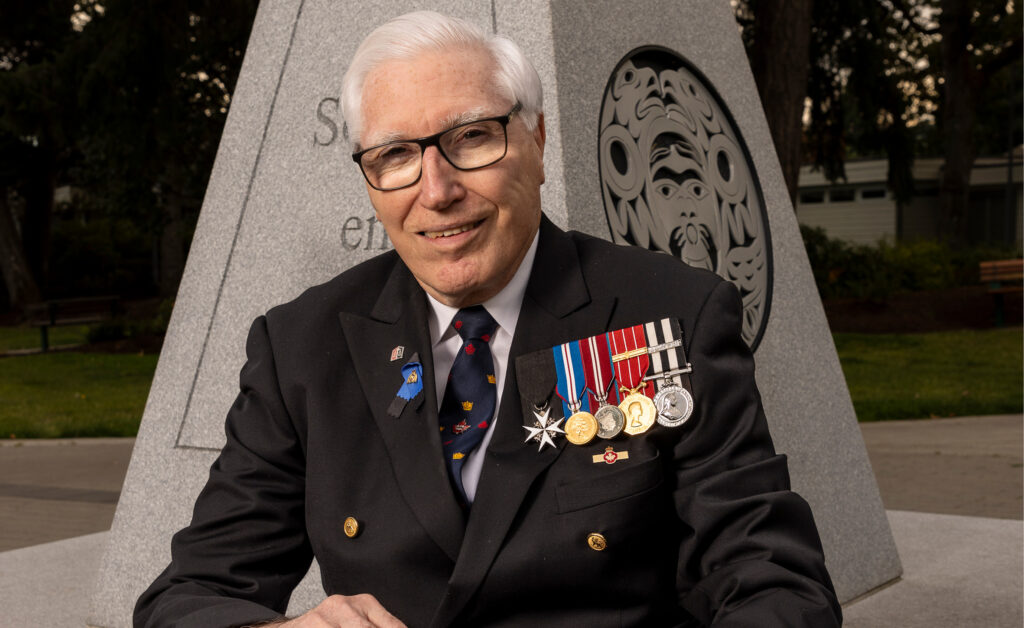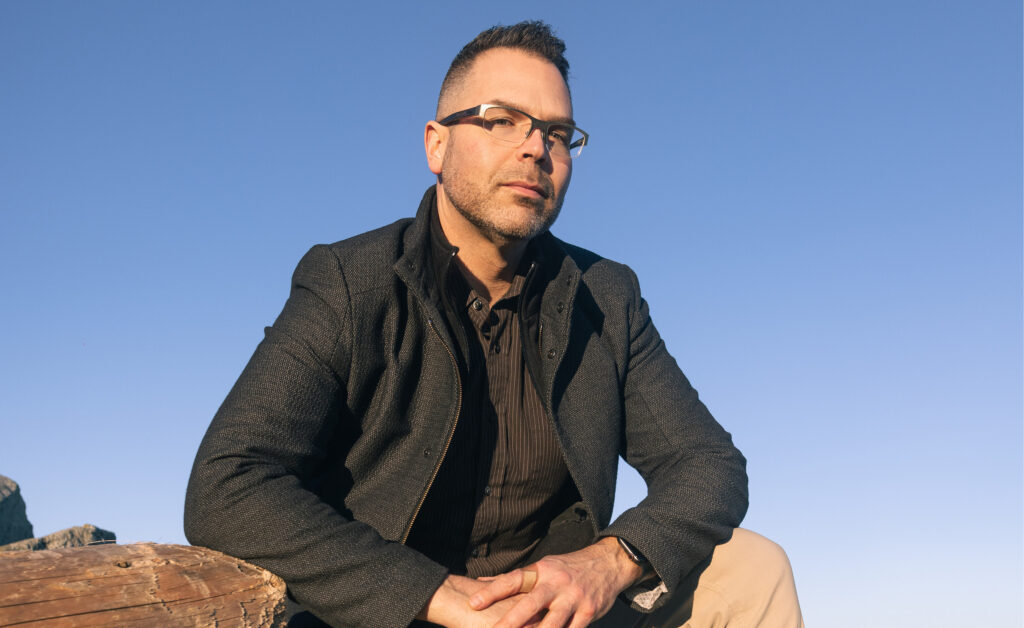by Jesse Holth | photo by Leah Gray –
Retired Lieutenant Commander Gerald Pash has spent his life advocating for Veterans—through his role in radio broadcasting, supporting Veterans’ organizations, commanding an Air Cadet Squadron, and as a public affairs officer for the Canadian Forces and the Royal Canadian Navy. He has emceed remembrance events commemorating the Battle of the Atlantic, the Battle of Britain, Canadian Peacekeeping missions, and Remembrance Day. I spoke with him about his life, the significance of Remembrance Day, and the importance of commemoration.
Can you tell me a little about yourself? What is your particular interest in commemoration?
“My father, like so many, enrolled in the Canadian army shortly after the Second World War began. He was overseas when he became ill, suffered from bronchial bleeding, and was repatriated home to Canada. He was released and worked for Canada Bread for a while, but eventually ended up back in the hospital—he died four months after I was born.
“This was the first connection to my interest in remembrance and commemoration. I’ve attended these ceremonies since I was a babe in arms. When my mother remarried in 1951, she married a member of the Royal Canadian Navy in Winnipeg. We moved to Victoria when I was about 8 years old. I was in the army cadets, and when I graduated from Victoria High School, I got into broadcasting. I worked at radio stations in Victoria, Chilliwack, and the South Okanagan, and made sure we broadcast the Remembrance Day service every year.
“At the radio station in Penticton, we hosted a live show for Veterans to share their stories, and made sure that remembrance was a topic of discussion every November. After 27 years in broadcasting with 17 years in the Okanagan, I moved back to Victoria, when the Navy opened a service-specific public affairs office, here in Esquimalt, in 1990. I ended up spending 22 years in public affairs. In 2012, I was appointed Citizenship Judge for British Columbia and served for six years. For the last four years I’ve had the pleasure and honour to emcee the ceremony for Central Saanich at Pioneer Park, now called HEL,HILEȻ (hul-he-look), and I’m looking forward to doing it again this year.
What is a special or significant memory that stands out in your mind?
“On the occasion of the 8th annual Peacekeeping Veterans Commemoration in 2000, a new plaque was unveiled on the cenotaph in downtown Victoria, commemorating peacekeeping operations—I actually designed that plaque. There is a Canadian maple leaf surrounded by laurel leaves, inspired by the Canadian Medal of Valour and the Canadian Medal of Bravery. It also reads “in the service of peace” which is the reverse side of the United Nations Medal. It was forged in the HMC Dockyard.
“Another one is the provincial ceremony for the repatriation of the unknown soldier, who is buried in Ottawa. As part of that program, soil from each of the provinces was taken to Ottawa and put at the location where the unknown soldier is buried, at the National War Memorial.
“My mother was a silver cross widow. Later in her life, she represented widows at the Remembrance event in Esquimalt, and I escorted her—that was interesting in terms of completing the circle.
Can you speak to the importance of Remembrance Day and commemoration in general?
“Contemporary remembrance, for most of us, is very different—about 80% of us were born after the Second World War, so any family history, even for later wars, is not necessarily apparent. It’s pretty distant, whether it’s a grandparent or even a great-great-grandparent. It can be difficult to know how those family stories add to contemporary history, and the motivation to mark the event.
“Canada is a wonderful country and we have had life for the choosing for eight decades. No one is expected to put their life on hold to enroll in the military and go to war, and yet this country from a population of 11 million came up with a fighting force of one million people during World War Two. It was embedded in the lives of those around us—and now the relationship and understanding isn’t necessarily there. It’s important for families and young people to know the stories.”




